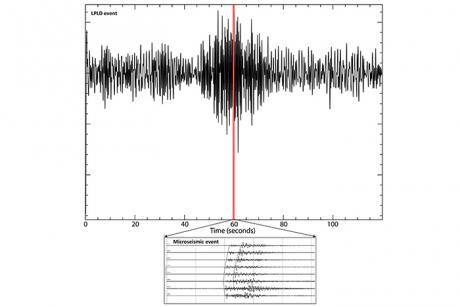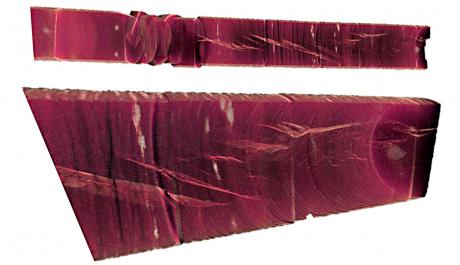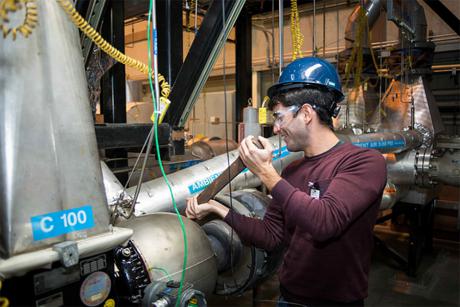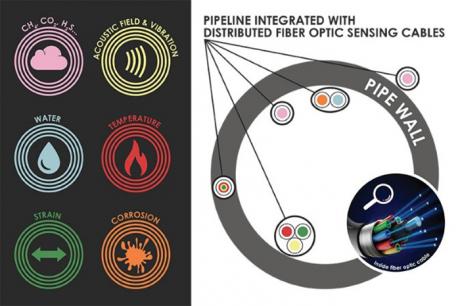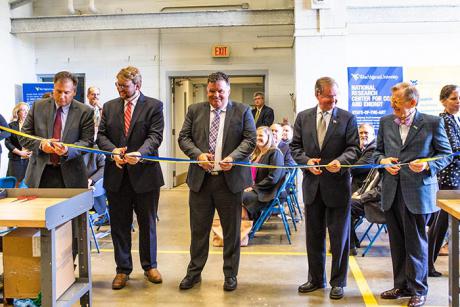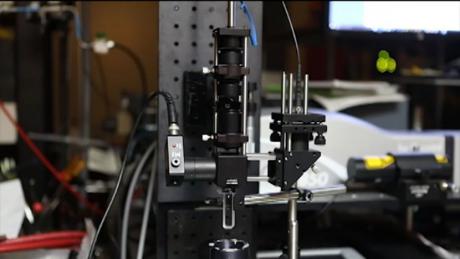Seismic activity occurs regularly, primarily due to Earth’s natural movement but sometimes due to the deep injection of wastewater for disposal or other valuable purposes. Far from the catastrophic images of devastating earthquakes that may come to mind, the most frequent seismic activity is imperceptible and even beneficial to the average American. When it comes to hydraulic fracturing operations to recover deep shale gas, seismic activity provides vital information to scientists about the subsurface stresses and permeable fractures.
Without ever leaving the Lab, NETL researchers are exploring the microscopic spaces in rocks, called pores, to take measurements as they seek a better understanding of how liquids and gases interact. These measurements are expanding scientific knowledge of the subsurface environment to ensure safe and effective carbon storage, enhanced resource recovery, and basic scientific understanding of subsurface phenomena.
Employment in energy fields, including oil and natural gas sectors, continued to increase in 2017, but employers are facing challenges when seeking qualified workers to fill open positions, according to data presented during the Future Energy and Manufacturing Jobs webinar sponsored by the NETL Regional Workforce Initiative (RWFI).
The U.S. Department of Energy’s (DOE) Office of Fossil Energy (FE) has selected three additional projects to receive approximately $3.3 million in federal funding for cost-shared research and development. These projects are supported through the funding opportunity announcement (FOA) DE-FOA-0001728, Advanced Combustion Systems: Existing Plant Improvements and Transformational Technologies.
The U.S. Department of Energy’s (DOE) Office of Fossil Energy (FE) selected five projects to receive approximately $10.7 million in federal funding for cost-shared research and development. The projects will advance tools and methods for assessing the state of stress and geomechanical impacts within the subsurface associated with underground carbon storage. The projects are supported through the funding opportunity announcement (FOA) DE-FOA-0001826, Developing Technologies to Advance the Understanding of State of Stress and Geomechanical Impacts within the Subsurface.
For the 18th year, NETL will present the Energy and Power Generation Training Course for the U.S. Department of State’s Foreign Service Institute (FSI) today through Friday to help educate future U.S. diplomats about critical national and international energy issues.
Secure and reliable natural gas delivery is essential as the industry grows to meet an increasing portion of America’s energy needs. Natural gas accounted for nearly 32 percent of the electricity produced in the United States in 2017, and the U.S. Energy Information Administration expects that figure to rise to nearly 39 percent by 2050.
An innovative bench-scale facility established at West Virginia University (WVU) in collaboration with NETL will demonstrate the feasibility of extracting rare earth elements (REEs) from acid coal mine drainage (AMD) to develop a domestic supply of REEs – an effort that will enhance America’s economic growth and national security.
NETL researchers are using a laser-based technology to create newer methods that can better quantify certain environmental impacts associated with fossil energy production or underground carbon storage by assessing gases, water and soil quality in situ underground.
Specifically, the experts at NETL have adapted Laser Induced Breakdown Spectroscopy (LIBS) hardware to well-bore monitoring applications, making LIBS more effective and easier to use for in-the-field subsurface research.





